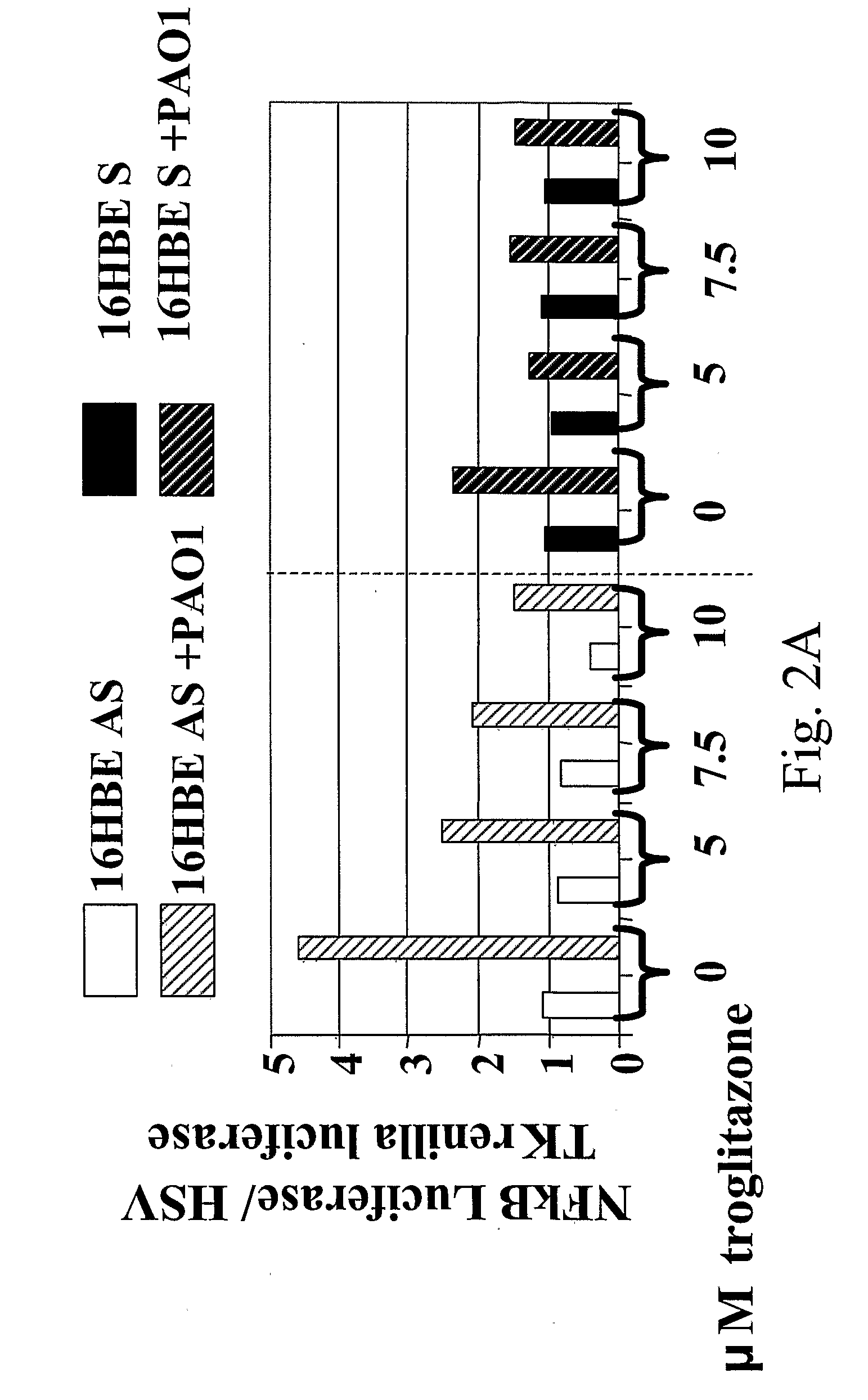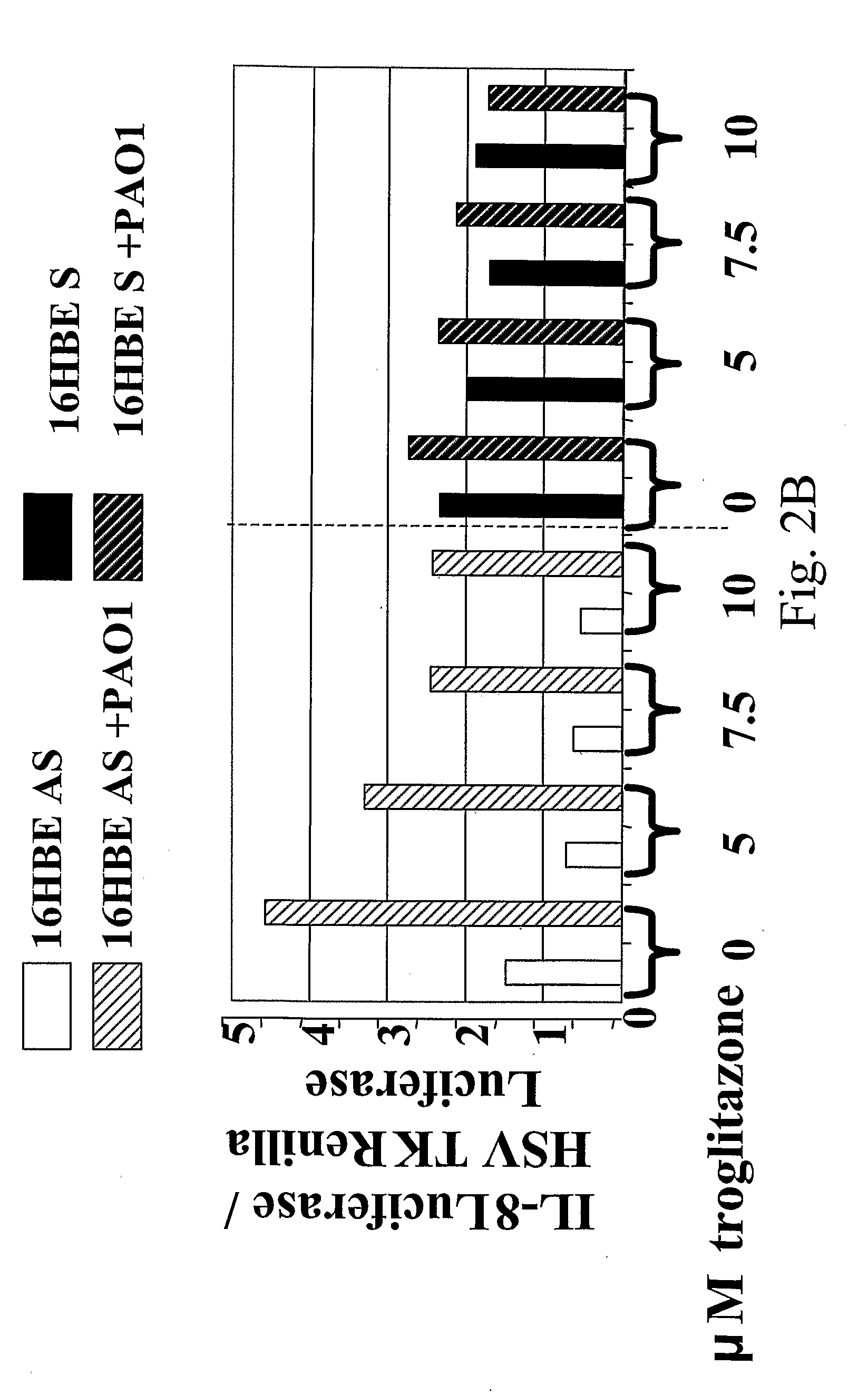Methods and compositions for treating inflammation
- Summary
- Abstract
- Description
- Claims
- Application Information
AI Technical Summary
Benefits of technology
Problems solved by technology
Method used
Image
Examples
example
Inflammatory Stimuli Alter the Interaction of PPARγ with Binding Partners in Airway
[0115]Epithelial Cells Comparison of Cystic Fibrosis (CF) Cells v. Non-Cystic Fibrosis Cells and Animals
[0116]The CF airway epithelial cell responds to inflammatory stimuli with increased production of proinflammatory cytokine IL-8, as well as IL-6 and GM-CSF compared to normal controls, as a result of increased activation of NF-κB in the CF cells. In order to investigate mechanisms by which NF-κB could be activated in excess in CF, and potential therapeutic interventions to prevent this excessive activation, we assessed PPARγ in airway epithelium. In CF, PPARγ function is reduced. This may contribute to the excess NF-κB activation because PPARγ interacts with NF-κB to prevent its function as a transcription factor. Under conditions of inflammatory stimulation, such as PAO1 exposure or TNFα / IL-1β treatment, the interaction between PPARγ and NF-κB is reduced, but this reduction is abrogated by administ...
PUM
 Login to View More
Login to View More Abstract
Description
Claims
Application Information
 Login to View More
Login to View More - R&D
- Intellectual Property
- Life Sciences
- Materials
- Tech Scout
- Unparalleled Data Quality
- Higher Quality Content
- 60% Fewer Hallucinations
Browse by: Latest US Patents, China's latest patents, Technical Efficacy Thesaurus, Application Domain, Technology Topic, Popular Technical Reports.
© 2025 PatSnap. All rights reserved.Legal|Privacy policy|Modern Slavery Act Transparency Statement|Sitemap|About US| Contact US: help@patsnap.com



